Finished Scale Models

Scale Model Pages
Overview & Tips | Ardpol | Czech Master Resin | Heritage Aviation Models Ltd. | HPH Models | Planet Models | Pure Planes | Revell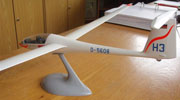
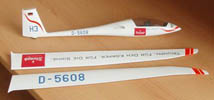
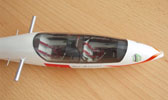
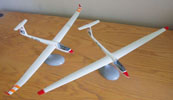

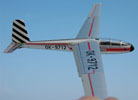
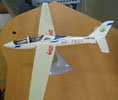
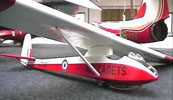
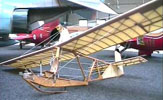
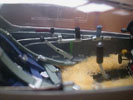
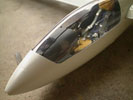
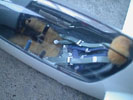
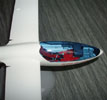
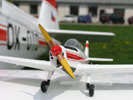
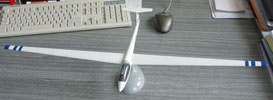
HpH in the Czech Republic is known for their incredibly detailed finished scale aircraft models. They are also the manufacturer of full scale sailplanes. Their models are not unassembled model kits, they are detailed finished models. Each model is made to match the original full-size aircraft - including paint schemes, contest and registration numbers, and cockpit details. They are, therefore, much more expensive than unassembled model kits, but they are worth every penny. They look great hanging in your office or sitting on your desk and they are a great way to encourage friends and colleagues to ask you about soaring. Just think how many more people would ask you about soaring if you had one of these models on your desk! They are also a great to admire while waiting for your new full-size glider to be delivered. Their sailplane models are all done in the 1:25 scale - which makes them larger than all the model kits listed above. Details are available on the HpH Models page.
Model Sizes
Please note that there are several different scales used in these model kits. The larger the scale number, the smaller the model. The 1/72 scale models are quite small. The table below can be used to get an idea of the actual sizes of the different scale gliders. I don't want anyone to be shocked to find an extremely small model upon arrival. A few examples may also help – The 1:32 scale Revell DuoDiscus model has a wingspan of 62.4 cm (24.6 inches). The 1:72 scale Stümmel Habicht has wingspans of 8.3 or 11.1 cm (3.3 or 4.4 inches).
Scale Size Chart
|
- Wash Parts - Be sure to wash all parts of all model kits in mild detergent before assembly to remove any trace of mould release wax. I use a mild dish washing soap and a lot of water.
- Glues
- Plastic Injection Molded Kits - Plastic model glue is most commonly used. However, cyanoacrylates ("CA", "superglue") and epoxies also work fine.
- Resin Kits - Plastic model glues will not work. Use super glue (also called cyanoacrylate or "CA") or epoxy.
- Safety
- Use a safety mask when sanding and painting all models. Resin and plastic dust and paint fumes can be harmful if inhaled.
- "Wet sand" to minimize dust in the air. Wet sanding is sanding with the sandpaper wet. Since the dust sticks to the sandpaper so it won't get into the air and be inhaled.
- Provide good ventilation when sanding and painting models. A painting hood that is vented outdoors is highly recommended.
Modeling Tips Web Sites
The web sites below offer tips on building scale plastic model kits.
- http://buildingscalemodelaircraft.com/
- Testors Scale Model Workshop - Great free video series
- A Resin Model Kit Primer - Very good
- The Art of Building Plastic Model Airplanes - great video
- http://www.ehow.com/how_7927_build-plastic-model.html
- Revell Knowledge Base
- http://scale-model-aircraft.com/
- http://www.letletlet-warplanes.com/
- Plastic Injection Molded Kit
If you have ever built a plastic kit, it was probably an injection-molded one. The parts are formed in polystyrene plastic that are attached to frames known as sprues. After removing the parts from the sprues, you put the kit together as a three-dimensional puzzle, helped by detailed instructions. Plastic parts are glued together with plastic cements such as the tried-and-true tube glue, liquid cements, superglues, or epoxies. The Revell and Profiline model kits are Plastic Injection Molded Kits. Note that these kits offer the highest quality, lowest price, and they are the easiest to build. - Resin Kit
Sometimes referred to as "Garage Kits". This term has been coined to represent the fringe of the model kit manufacturing community (generally individuals) who produce kits (yes, sometimes in their garage!) that number in dozens, rather than the hundreds or thousands or millions that constitute the bulk of consumer-oriented commercial model kits sold at regular retail outlets. Instead of being molded with hot plastic as injection-molded and vacuum-formed kits are, resin kits are made from liquid urethane or polyester resins poured into silicone rubber molds. The liquid resin sets after a few minutes, and the molds are separated to release the parts. Resin kits usually are of subjects that are not available in injection-molded kits, and they can be expensive. You must use super glue (also called cyanoacrylate or "CA") or epoxy to build resin kits - not plastic model glue. The kits from Ardpol, Czech Master Resin, Heritage, and Planet are resin kits. Note that some of these kits are of lower detail and quality than the plastic injection molded model kits (with the exception of the very nice Ardpol kits). Resin kits are also generally more expensive and more difficult to build. See: A Resin Model Kit Primer
- LET Models - Large scale flying model sailplanes
- TMRC - Tom Martin Radio Control - Radio control model glider kits and plans
- DecalPaper.com - Create your own decals using your printer
- FiddlersGreen.net - Neat paper card model of airplanes and gliders.
- eModelAirplanes - Custom scale display models - Search for either glider or sailplane. Interesting, but they don't appear very accurate.
There are no products to list in this category.
